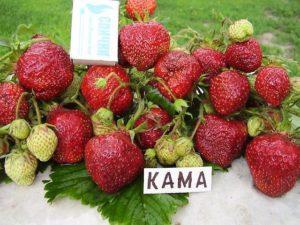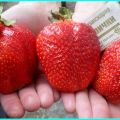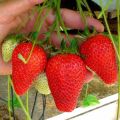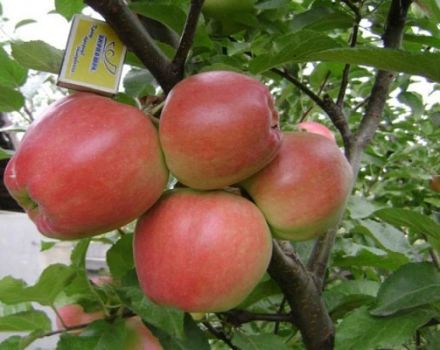Description and characteristics of Bereginya strawberries, planting and care
Breeders are constantly developing new varieties of strawberries that differ in yield, taste and growing conditions. One of the popular options is the Bereginya strawberry, appreciated by gardeners for its juicy pulp and pronounced aroma.
Description and characteristics of strawberries Bereginya
When planning the landing of this species, you should read the detailed description. Knowing the characteristics of the plant, it will be possible to track deviations from the norm during the cultivation process.
History of appearance
The variety was bred as a result of breeding developments when crossing the Induka and Solovushka varieties. The strawberry variety Bereginya inherited the best characteristics of the parent plants and was entered into the official State Register.
Yield
Strawberry Bereginya has a high yield. Up to 15 tons of berries can be obtained from one hectare. Plants begin to bear fruit in the first year of growing. The harvest ripens evenly, which allows you to collect the bulk of the berries in one go.
Yield characteristics
Large berries weighing up to 25 g have a rich red skin and juicy flesh. The fruits are sweet in taste, cone-shaped. Strawberries are high in vitamins, sugars and organic acids.
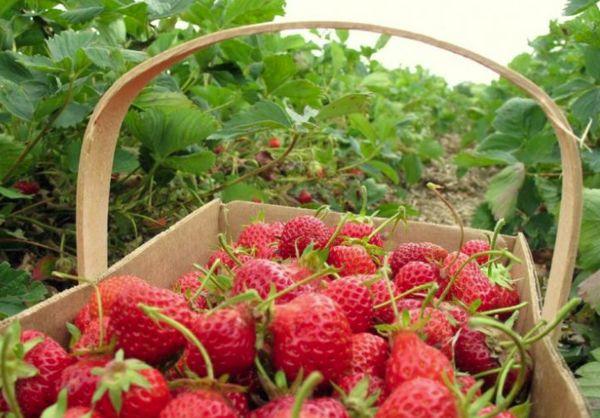
Appearance
The Bereginya variety forms medium-sized bushes of a semi-spreading type with thickened foliage. Shoots are small, pale red, formed in large numbers. Leaves are light green, slightly wrinkled, concave, with noticeable pubescence.
Resistant to adverse weather conditions and diseases
It is possible to grow the Bereginya variety in territories with any climate, since the berries are highly resistant to sudden changes in temperature, cold weather and drought. Also, strawberries are resistant to common fungal infections and harmful insects.
Transportation options
Thanks to the dense pulp, the harvested crop can be transported over long distances. During transportation, the berries do not lose their presentation and taste.
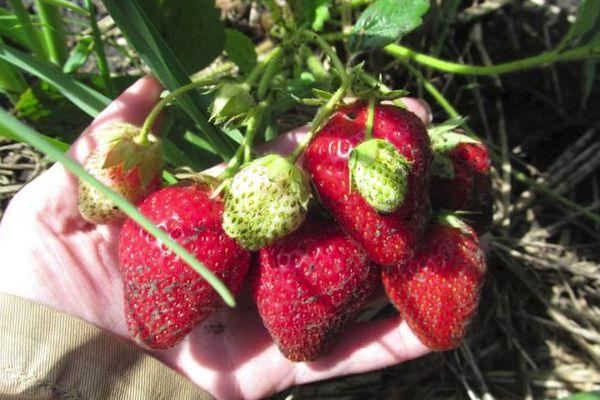
Pros and cons of the variety
According to the description of the Bereginya strawberry, it is characterized by a number of positive characteristics and several disadvantages.The main benefits include:
- high taste characteristics and pleasant aroma;
- stable fruiting;
- resistance to negative external influences.
The disadvantages of the berry culture are the need to provide comprehensive care. Without following the rules of agricultural technology, you can lose a significant part of the crop.
How to grow strawberries Bereginya
When planting and further growing plants, it is necessary to follow a certain technology. In order for the bushes to actively develop and bear fruit abundantly, it is important to pick up healthy seedlings, properly prepare them for planting and decide in advance on a place on the site.

How to choose good strawberry seedlings
It is quite simple to choose strawberry seedlings in the summer - healthy seedlings look fresh outwardly and they have thick foliage. If the choice is made in the spring, when the seedlings did not have time to overgrow with leaves, the following nuances should be considered:
- It is better to choose healthy seedlings derived from mother plants. Such seedlings are highly resistant to diseases and pests. Healthy strawberries yield more crops than regular strawberries.
- You should buy seedlings from trusted manufacturers. This will avoid purchasing low-quality seedlings.
- Plant roots should not be damaged. It is worth examining the root system externally and make sure it is in good condition.
Choosing a place on the site
To grow a large crop, you need to choose a suitable place on the site. Plants prefer a sunny area with slightly acidic soil. The site must be protected from wind gusts, and a completely unventilated location can trigger infections.
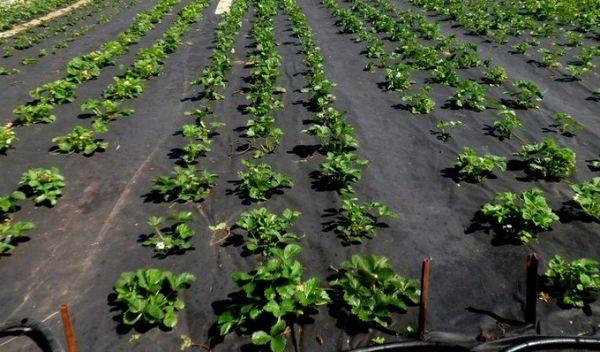
Before planting, it is worth checking the level of groundwater - the optimal indicator is 70-80 cm.The surface of the soil must be cleared of weeds, especially perennial ones, since it is more difficult to deal with it in planted beds.
Landing rules
When planting seedlings with bare roots, it is necessary to place the seedlings in the prepared pits so that the roots and core remain at soil level. Too elongated roots can be cut to 6-8 cm. Using seedlings with a closed root system, you need to remove the seedlings from the container without destroying the earthen lump.
Features of crop care
In the process of growing bushes, complex care is required. Compliance with agricultural technology is the key to a stable harvest.
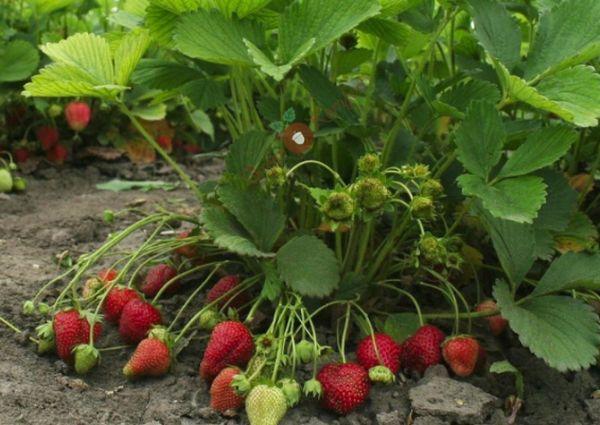
Top dressing
The first portion of fertilizer is applied before planting the bushes. For this purpose, nitrogenous feeding is suitable. The following fertilizers are applied during flowering and after harvest. Complex and organic fertilizers are suitable for strawberries.
Watering
Strawberries are watered as the soil dries. Waterlogging should not be allowed so as not to destroy the structure of the roots.
Loosening
After each watering, the soil is loosened. This is necessary for aeration of the soil and the passage of moisture to the lower layers. You can loosen the soil with garden tools or manually.
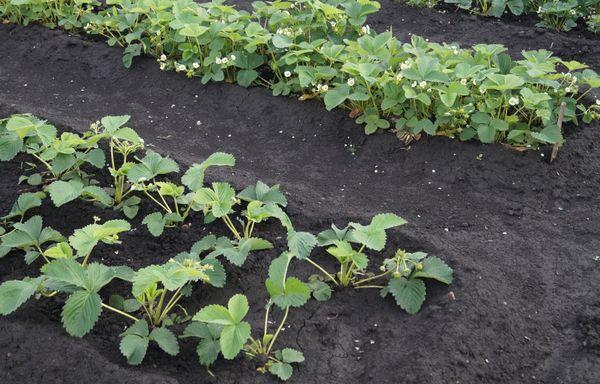
Weeding
Simultaneously with loosening, weeding of the land under the bushes is required. In the process of weeding, weeds are removed, including in the aisles, and then the cleaned space is sprinkled with sawdust or dry branches.
Mulching
The area around the bushes is mulched in the spring, when the plants form ovaries, and in the fall, before the first frost. You can use hay, leaves, bark, straw, humus and other organic matter as mulch. Mulching helps reduce the likelihood of disease and pest attacks.
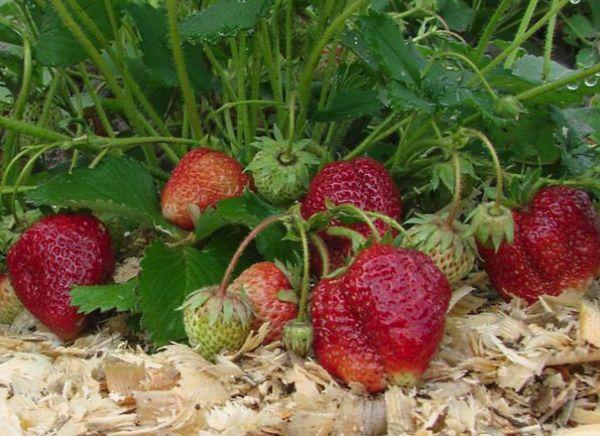
Shelter for the winter
In anticipation of the winter period, strawberries are protected with a covering material.You can use specialized material for shelter or leave the bushes for the winter under the snow cover if it falls in large quantities.
Reproduction
Strawberry propagation is carried out with a mustache or by dividing the bushes. When the antennae reach the ground, they gradually begin to root and form new plants. Division is carried out by cutting off a part of the plant and planting it in a new place.
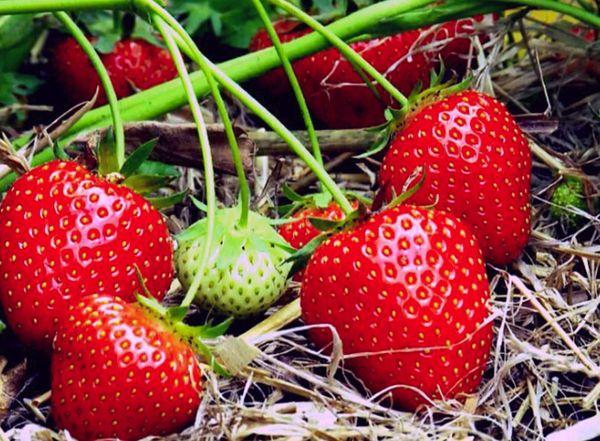
Possible diseases and their treatment
Under unfavorable conditions, the berry culture can be affected by white spot, powdery mildew, late blight and rot. For treatment, fungicidal preparations are used.
Pest control methods
To destroy or scare away pests, insecticide spraying should be performed. It is also allowed to carry out preventive treatments. Large pests are removed from the beds by hand.
Collection and storage of strawberry harvest
Ripe berries are picked together with the stalk so that they can be stored longer. The Bereginya variety is universal, therefore it can be operated by processing, conservation and fresh consumption.

